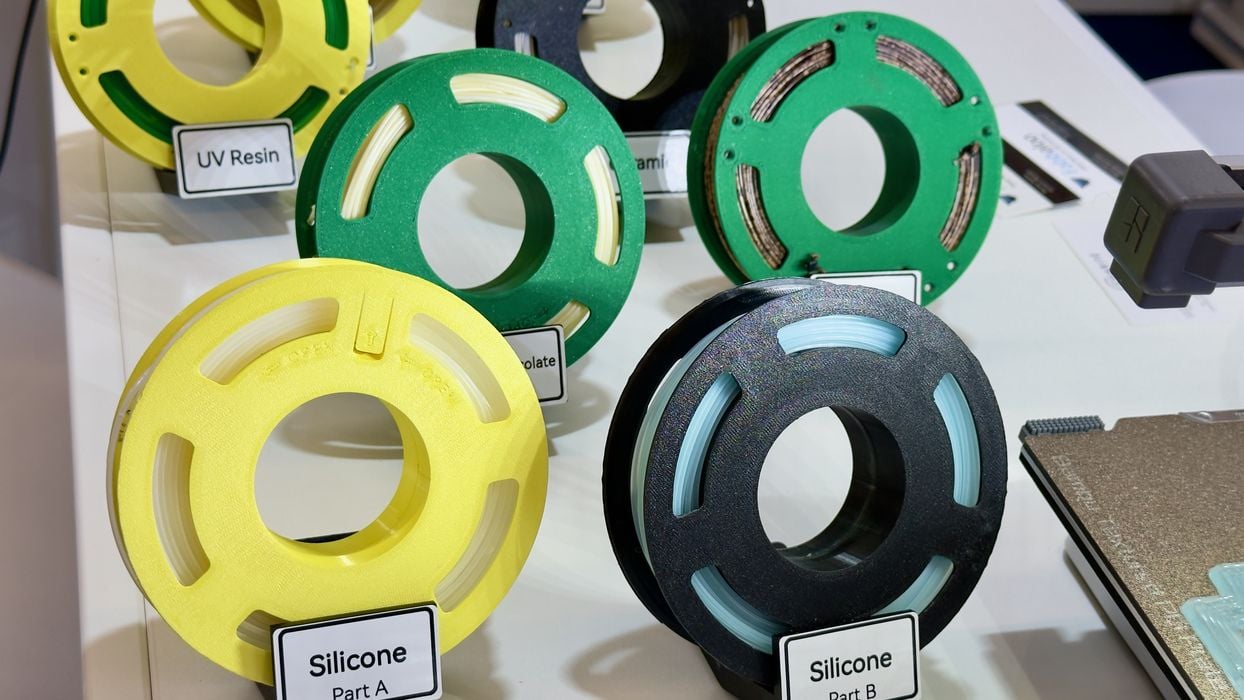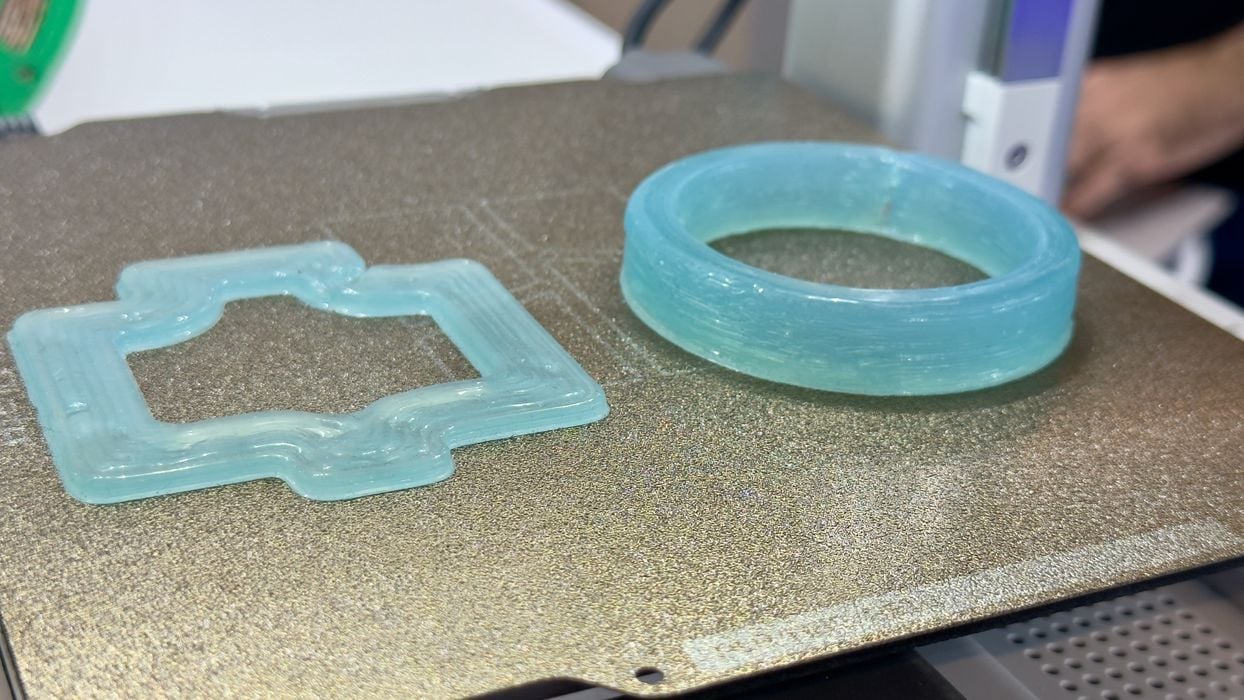
One of the more interesting technologies we saw at Formnext 2024 was from Filament2.
You have almost certainly not ever heard of Filament2, and that’s because they were founded only in July – four months ago. Among the founders is Eran Gal-Or, a serial 3D print entrepreneur, who previously founded MICRON3DP, a startup able to 3D print glass.
Following along the concept of 3D printing unusual materials, Gal-Or’s latest venture, Filament2, also focuses on making it easier to 3D print materials you wouldn’t normally be able to print without specialized equipment.
I asked Gal-Or what inspired this project, and he explained that his daughter asked him to print some candy. He realized this really isn’t possible with today’s machines, so he set about finding a way to do so.
Filament2’s technology is a method of 3D printing paste-style materials using standard FFF 3D printers. Paste materials are not new, and have been used for many years. Typical paste materials have been chocolate, ceramics, clay, foods and silicone. However, they’ve always been used with syringe-powered extruders.
The syringe approach works, but is limited in that when the cartridge is empty, printing must stop. In addition, there is usually specialized hardware required to power the syringe. In some cases — hard clay — this can require high powered compressors.
All of this has meant that printing paste materials is not typically seen in the industry these days. Filament2 aims to change that with their new paste filament technology.
They have developed a filament that you can print directly on almost any standard FFF device — with a very simple modification.
How does it work? It’s quite a brilliant solution, and I am very surprised no one has thought of this before. Here’s how it works:
- A plastic tube of outer diameter 1.75mm is slit along its length
- The paste material fills the inside of the slit tube
- The tube is easily grabbed by a FFF extruder, and pushed into the hot end
- The nozzle is swapped out on the FFF 3D printer for a special Filament2 version
- The Filament2 “end” includes a rigid metal tube pointing up towards the incoming filament
- The metal tube has a diameter equal to the inner diameter of the slit tube
- The slit tube flows along the outside of the metal tube, and the paste material goes inside the metal tube
- Pressure from forthcoming paste material keeps it going all the way through to the nozzle
- The now-empty slit tube curls off to the side, where it can be recovered

The only modification to the FFF 3D printer is to replace the nozzle. This is actually easily done since most modern FFF 3D printers have been designed for quick swap nozzles. As of this moment, the company has made nozzles for the popular Bambu Lab A1 series, which are very easy to change out.

They plan on introducing nozzles for using with other machines in the future. This should be quite easy to do since they need only adapt the mounting feature to match the machines.
The result is a 3D printer that can print paste materials indefinitely, or at least as long as you have filament.
In theory any paste material that’s stable at room temperatures can be printed using this approach. The company has experimented with chocolate, ceramics, silicone and more.
For chocolate, there’s an interesting twist: the A1 3D printer’s heat block is still on the machine, and this allows a Filament2 modified device to temper the chocolate by varying the heat block temperature. The chocolate is perfectly tempered as it passes by the heat block.

For silicone, they’ve used a two-part silicone. How do you print a two-part paste on this setup? It turns out their successful silicone experiment was done on a separate IDEX machine that had two heads, each with one of the two-part silicone mix.
However, that’s not the plan. They are developing a special slit tube filament that has a membrane separating the two parts. If they succeed in this approach, any FFF 3D printer should be able to directly print pure silicone objects at a very low cost. This could be a substantial blow to specialized silicone 3D printer manufacturers.
This is quite an incredible technology that could break open entirely new applications for desktop 3D printing. I’m quite excited to see how this plays out.
However, they are currently only at the proof-of-concept stage, and intend on launching actual products some time in 2025.
Meanwhile, they are looking for investors that can help them move forward, specifically in the US$2M range. If there are investors looking for 3D print opportunities, this could be a good one.
Via Filament2
